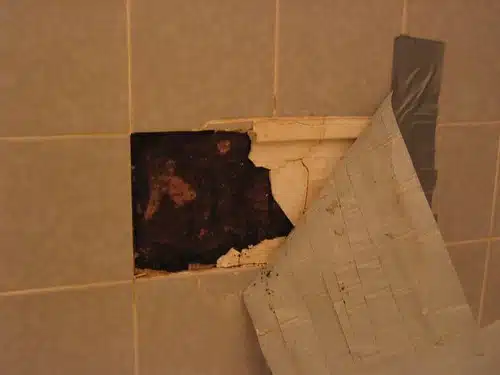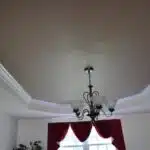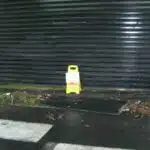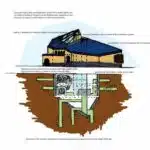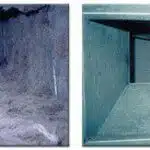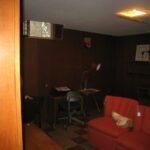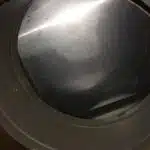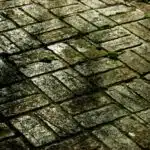Mold is a common problem found in many homes, and it can be harmful to both the structure of the building and the health of its occupants. It grows in damp environments, and once it sets in, it can be difficult to remove. Mold spores are airborne and can cause respiratory problems, allergies, and other health issues. As a mold remediation specialist, I have seen the effects of mold on people’s lives and understand the importance of addressing this issue promptly.
In this article, we will explore how to get rid of mold from every home surface. We will cover the proper techniques for identifying different types of mold, assessing the level of contamination, and implementing appropriate remediation strategies. We will also discuss preventative measures that homeowners can take to avoid future mold growth. By following these guidelines, homeowners can ensure their families’ safety and maintain their homes’ structural integrity.
Understanding The Dangers Of Mold
As a mold remediation specialist, it is essential to understand the dangers of mold and how to prevent them. Mold can grow on various surfaces and materials, including drywall, wood, and fabrics. The spores can spread easily throughout the air and attach themselves to other surfaces in your home, making it difficult to detect and remove.
Understanding health risks associated with mold exposure is crucial for homeowners. Exposure to mold can cause a range of health problems, from mild allergic reactions to severe respiratory issues. Those with pre-existing conditions such as asthma or weakened immune systems are particularly vulnerable. Prevention techniques such as controlling moisture levels in your home and immediately addressing any water damage can significantly reduce the risk of mold growth.
As a mold remediation specialist, it is our duty to educate homeowners on the importance of understanding the potential health risks associated with mold exposure. By taking preventative measures and knowing how to identify different types of mold, we can keep ourselves and our loved ones safe from harm’s way. In the next section, we will dive deeper into identifying different types of mold commonly found in homes.
Identifying Different Types Of Mold
As we have discussed in the previous section, mold poses a significant danger to our health and wellbeing. Therefore, it is crucial to take steps towards preventing its growth in our homes. Mold prevention involves controlling moisture levels in our environment by fixing any leaks, improving ventilation, and ensuring proper insulation. Additionally, regularly cleaning and disinfecting areas prone to mold growth can help prevent its spread.
While prevention is key, it is also important to identify mold growth early on. DIY mold testing kits are available for purchase at many home improvement stores and can be a useful tool for detecting mold in your home. These kits typically involve collecting samples from suspected areas of mold growth and sending them off to a lab for analysis. However, it is important to note that professional mold testing may be necessary for accurate results.
Recognizing common areas of mold growth can also aid in early detection. Bathrooms, kitchens, basements, and attics are particularly susceptible due to their high humidity levels and poor ventilation. Other areas of concern include around windows and doors with condensation buildup, under sinks or appliances with leaks or spills, and on ceiling tiles or walls with water damage. By regularly inspecting these areas and taking prompt action if signs of mold appear, you can prevent potential health hazards associated with prolonged exposure to mold.
In summary, preventing the growth of mold in our homes should be a top priority for all homeowners. Through proper maintenance practices such as controlling moisture levels and regular cleaning efforts combined with early detection measures like DIY mold testing kits and vigilance towards common areas of growth – we can ensure that our homes remain safe environments free from potentially harmful toxins associated with prolonged exposure to unwanted fungal invaders. Recognizing these common areas of concern is an essential step towards maintaining a healthy living space for ourselves and those around us.
Recognizing Common Areas Of Mold Growth
Mold growth is a common problem that can occur in any home. Some of the most common causes of mold include high humidity levels, water damage, and poor ventilation. Mold can grow on almost any surface, including walls, floors, ceilings, furniture, and even clothing. If left untreated, mold can cause serious health problems for people living in the affected area.
It is important to recognize the common areas of mold growth in order to prevent its spread throughout your home. The following are some areas where mold is often found:
- Bathrooms: Bathrooms are a prime location for mold growth due to the high humidity levels and moisture from showers and baths.
- Kitchens: Kitchens are another area where mold can thrive due to moisture from cooking and washing dishes.
- Basements: Basements are often damp areas that provide ideal conditions for mold growth.
- Attics: Attics can also be a breeding ground for mold due to poor ventilation and insulation.
To prevent mold from growing in these areas, it is important to keep them clean and dry at all times. This can be done by regularly cleaning surfaces with an anti-fungal solution, using exhaust fans to improve ventilation and reduce humidity levels, and fixing any leaks or water damage as soon as possible.
By recognizing the common areas of mold growth and taking steps to prevent its spread, you can improve the air quality in your home and protect yourself from potential health risks associated with exposure to mold spores. In the next section, we will discuss how to assess the level of contamination caused by mold growth in your home.
Assessing The Level Of Contamination
Assessing Mold contamination is a vital process in mold remediation. It determines the level of mold growth, the extent of damage caused by it, and the appropriate steps needed to remove it completely. When assessing mold, it is essential to keep in mind that different types of molds have varying health hazards. Some molds are toxic and can cause severe respiratory problems, while others may only cause minor irritation.
To assess the level of contamination, professionals use various techniques such as visual inspection, air sampling, and moisture mapping. Visual inspection involves examining every surface for visible signs of mold growth. Air sampling is done by collecting samples from the air for laboratory analysis to determine the type and concentration of mold present. Moisture mapping is also an important technique used in assessing mold; it involves identifying areas with high humidity or water damage that may be contributing to mold growth.
Prevention techniques are crucial in assessing mold and preventing future contamination. These include reducing humidity levels through proper ventilation, fixing leaks promptly, and ensuring proper insulation. Regular cleaning and maintenance of surfaces prone to moisture build-up can also prevent mold growth. Professionals recommend seeking help from certified experts when dealing with severe cases of Mold contamination to avoid further health hazards.
Moving forward into preparing for Mold remediation, understanding the extent of contamination provides useful information on the amount of work required and the type of equipment needed for successful removal.
Preparing For Mold Remediation
Assessing the Mold Problem requires careful examination of the affected surface areas and identifying the type of mold present. The appropriate course of action can then be determined based on the severity of the contamination. Gather supplies and equipment including protective gear, cleaning supplies, and specialized mold remediation tools prior to beginning the mold removal process. Professional mold remediation specialists may also recommend the use of air purifiers and dehumidifiers to help reduce moisture in the air and prevent future mold growth.
Assessing The Mold Problem
When it comes to mold remediation, the first step is always assessing the severity of the problem. This involves taking a close look at every surface in the affected area to determine the extent of mold growth. A professional mold remediation specialist will carefully inspect walls, floors, ceilings, and any other surfaces where mold tends to thrive. By doing so, they can identify all areas that require treatment.
Identifying the causes of mold is also key to preparing for effective remediation. Mold thrives in damp environments, so identifying sources of moisture is critical. Leaks from pipes or roofs, poor ventilation, and high humidity can all contribute to mold growth. It’s important to address these issues before beginning remediation in order to prevent future outbreaks.
Once the severity of the problem has been assessed and the causes have been identified and addressed, it’s time to move on to actual remediation efforts. This typically involves cleaning and disinfecting all surfaces affected by mold growth. In severe cases, more extensive measures may be required such as removing damaged drywall or replacing insulation. The goal is always complete elimination of any traces of mold in order to prevent health risks and further damage to your home.
Gathering Supplies And Equipment
As a mold remediation specialist, it is important to gather all the necessary supplies and equipment before starting any remediation efforts. Best practices dictate that we come equipped with personal protective gear such as gloves, respirators, and goggles to minimize our exposure to mold spores. We also need cleaning agents and disinfectants that are specifically designed for mold removal. These should be EPA-approved to ensure their effectiveness.
Taking necessary precautions is essential when gathering supplies for mold remediation. It’s important to avoid cross-contamination by using disposable items like paper towels or plastic bags for contaminated materials. To prevent further spread of mold spores, we also use negative air machines or HEPA-filtered vacuums during the cleaning process. Cost-effective alternatives such as DIY solutions should be avoided as they may not be as effective in completely removing mold from the affected surfaces.
In conclusion, preparing for mold remediation involves gathering all the necessary supplies and equipment needed to carry out the job effectively and safely. As specialists in this field, we prioritize best practices and take all necessary precautions to ensure successful removal of any traces of mold from your home or business premises. By following these guidelines, we can give you peace of mind knowing that your environment is safe and healthy once again.
Wearing Proper Protective Equipment
As a mold remediation specialist, I have seen firsthand the damage that mold can cause to both property and health. That’s why wearing proper protective equipment is crucial when dealing with mold. It’s not just about protecting yourself, but also your family and clients. Proper equipment can make all the difference in ensuring a safe environment during mold removal.
When it comes to wearing protective equipment, there are several things you need to keep in mind. First, make sure you have the right gear for the job. This includes gloves, goggles, respirators, and disposable suits. These items should be specifically designed for mold remediation and meet industry standards. Wearing improper or ill-fitting gear can lead to exposure and potential health risks.
Safety precautions must also be taken when putting on and taking off protective equipment. Mold spores can easily attach themselves to clothing and skin, so it’s crucial to use proper techniques when putting on and removing gear. It’s important to follow manufacturer instructions and avoid cross-contamination by disposing of used gear properly.
Protecting yourself while removing mold is essential for maintaining a safe environment. Proper equipment and safety precautions are key components of any successful mold remediation process. In the next section, we will discuss how to remove mold from walls and ceilings safely without spreading spores throughout your home or building.
Removing Mold From Walls And Ceilings
After properly equipping oneself with protective gear, the next step to getting rid of mold is removing it from walls and ceilings. Mold can grow on any surface that has moisture, so it is important to identify the source of the moisture and fix it to prevent reoccurrence. Once the source is fixed, the first step in removing mold from walls and ceilings is to vacuum up any loose spores using a HEPA filter.
The best cleaning solutions for removing mold from walls and ceilings depend on the severity of the infestation. For light mold growth, a mixture of vinegar and water or hydrogen peroxide can be effective. For more severe cases, professional-grade cleaners containing bleach may be necessary. It is important to use caution when handling these cleaners and always follow the manufacturer’s instructions.
Preventing reoccurrence after removing mold from walls and ceilings involves maintaining proper ventilation and humidity levels in the affected area. Regularly inspecting for leaks or other sources of moisture can also help prevent future growth. By following these steps, homeowners can effectively remove mold from their walls and ceilings while minimizing the risk of future infestations. The next section will cover eliminating mold from carpets and upholstery by utilizing similar techniques as those used on hard surfaces such as walls and ceilings.
Eliminating Mold From Carpets And Upholstery
One of the most challenging places to remove mold is from carpets and upholstery. Mold spores can quickly settle into the fibers, making it difficult to detect and eliminate. The best way to prevent mold growth in your carpets and upholstery is by keeping them clean and dry at all times.
It’s essential to deep-clean your carpets and upholstery regularly, especially if there has been any water damage or flooding. If you’re dealing with a severe mold problem, consider hiring professional services for better results. They have specialized equipment that can detect and remove mold from even the deepest parts of your carpets and upholstery.
While deep cleaning can help remove surface-level mold, it’s not always enough for porous materials like wood. In the next section, we’ll discuss how to treat mold on wood and other porous surfaces effectively. Remember that prevention is key when it comes to eliminating mold in your home. Keep your living spaces clean, dry, and well-ventilated to avoid any potential health hazards caused by mold growth.
Treating Mold On Wood And Other Porous Surfaces
After dealing with carpets and upholstery, it is time to treat mold on wood and other porous surfaces. Mold on these types of surfaces can be more difficult to eliminate, as the spores can penetrate deeper into the material. It is important to take swift action when dealing with mold in order to prevent further damage and potential health risks.
To effectively treat mold on wood and other porous surfaces, there are a few key steps to follow. First, it is important to identify the source of moisture and address any leaks or ventilation issues that may be contributing to the growth of mold. Once this has been addressed, choose an effective cleaner that is specifically designed for porous surfaces. It is best to avoid bleach-based cleaners as they can actually worsen the problem by adding moisture back into the material.
When choosing a cleaner for treating mold on wood and other porous surfaces, look for products that contain ingredients such as hydrogen peroxide or vinegar. These natural cleaners are effective at killing mold without introducing harmful chemicals into your home. Additionally, consider using a HEPA vacuum or air purifier to remove any remaining spores from the air.
Preventing re-infestation is crucial in maintaining a healthy home environment. Once you have successfully treated mold on wood and other porous surfaces, be sure to regularly clean and maintain these areas to prevent future growth. This includes implementing proper ventilation systems, monitoring humidity levels, and cleaning up any spills or leaks immediately.
Next up: cleaning mold in bathrooms and kitchens.
Cleaning Mold In Bathrooms And Kitchens
Tile surfaces can be cleaned of mold through the use of a cleaning solution of one part bleach to four parts water. Cabinets can be cleaned of mold by wiping the affected area with a mixture of water and detergent, and then using a dry cloth to dry the area. To prevent further mold growth, cabinets should be wiped down with a solution of one part vinegar to four parts water. Finally, all surfaces should be left to air dry completely to inhibit future mold growth.
Cleaning Mold From Tile
When it comes to cleaning mold from tile, there are several effective methods that can be used. The best cleaners for this task are a mixture of bleach and water or vinegar and baking soda. These solutions should be applied directly to the affected areas and left on for at least 15 minutes before scrubbing with a stiff-bristled brush.
For DIY tips, it’s important to wear protective gear such as gloves, goggles, and a mask when handling mold. It’s also recommended to open windows or use a fan for proper ventilation during the cleaning process. Additionally, it’s important to regularly clean and maintain bathrooms and kitchens to prevent mold growth in the first place.
Overall, cleaning mold from tile can be a daunting task but with the right cleaners and precautions, it can be done effectively. By taking care of your home surfaces regularly, you can help prevent mold growth in the future.
Cleaning Mold From Cabinets
When it comes to mold growth in bathrooms and kitchens, it’s not just the tiles that can be affected. Cabinets are also prone to mold growth due to their enclosed nature and exposure to moisture. Cleaning mold from cabinets requires a different approach than cleaning tiles, but with the right methods, it can be done effectively.
To start, it’s important to identify the type of material the cabinets are made of before choosing a cleaner. For wood cabinets, a mixture of vinegar and water or hydrogen peroxide can be used to kill mold spores. For metal or plastic cabinets, bleach and water may be more effective. It’s important to let the cleaner sit on the affected areas for at least 10-15 minutes before wiping clean.
Preventing recurrence is key when it comes to cleaning mold from cabinets. To do this, ensure proper ventilation in bathrooms and kitchens by using exhaust fans or opening windows during and after use. Additionally, regularly checking for leaks under sinks or around plumbing fixtures can help prevent moisture buildup. Using natural cleaning methods instead of harsh chemicals can also reduce the likelihood of future mold growth. By taking these steps and regularly maintaining your bathroom and kitchen surfaces, you can keep mold growth at bay.
Ventilating Your Home To Prevent Mold Growth
Proper ventilation is one of the most effective ways to prevent mold growth in your home. Good ventilation helps to reduce humidity levels, which is essential for preventing mold growth. In addition, it also improves indoor air quality, making your home a healthier and more comfortable place to live.
One of the best ways to improve ventilation in your home is by using an air purifier. These devices work by removing contaminants from the air, including spores that can cause mold growth. The benefits of air purification are many, including reducing allergy symptoms, improving respiratory health, and creating a more pleasant living environment.
If you’re looking for DIY ventilation solutions, there are several options available. One option is to install exhaust fans in bathrooms and kitchens to remove moisture and prevent it from accumulating in these areas. You can also open windows and doors on dry days or use a dehumidifier to reduce humidity levels in your home. Whatever method you choose, it’s important to ensure good airflow throughout your home to keep moisture levels under control.
Proper ventilation is only one step in preventing mold growth in your home. In the next section, we will explore another important aspect: reducing humidity levels to control mold. By combining all of these strategies together, you can create an environment that is inhospitable to mold growth and enjoy a healthier and happier life at home.
Reducing Humidity Levels To Control Mold
Humidity levels should be carefully assessed in order to determine whether they are conducive to mold growth. Humidity levels can be controlled through proper ventilation, dehumidifiers, and air conditioning to reduce the moisture in the air and limit the growth of mold. Additionally, the surfaces inside the home should be checked regularly for the presence of mold. Lastly, any detected mold should be promptly removed and the source of the moisture should be identified and addressed.
Assessing Humidity Levels
To effectively control mold, it is important to assess the humidity levels in your home. Measuring moisture is essential for preventing condensation and reducing the overall humidity level. As a mold remediation specialist, I recommend using a hygrometer to measure the relative humidity in each room of your home.
Once you have measured the humidity levels, it’s important to identify any sources of excess moisture. This could include leaky pipes, poor ventilation, or high indoor temperatures. By addressing these issues, you can reduce the amount of moisture in your home and prevent mold growth.
In addition to addressing sources of excess moisture, you can also take steps to prevent condensation from forming on surfaces in your home. This includes keeping windows and doors closed during humid weather, using exhaust fans in bathrooms and kitchens, and ensuring that air conditioning units are properly maintained. By taking these measures, you can effectively control mold and create a healthier indoor environment for you and your family.
Controlling Humidity Levels
As a mold remediation specialist, it is important to emphasize the significance of controlling humidity levels in reducing mold growth. High humidity levels create an inviting environment for mold to thrive, leading to health hazards and property damage. One effective way to control humidity levels is by using dehumidifiers. These devices work by drawing moisture from the air, thus reducing the overall humidity level in your home.
Humidity monitoring devices are also essential in controlling mold growth. These devices measure the relative humidity levels in each room, allowing you to identify areas that need immediate attention. Consistent use of these devices helps maintain optimal humidity levels and prevent excess moisture build-up.
Furthermore, it’s essential to note that dehumidifier benefits go beyond reducing mold growth. They also improve indoor air quality and prevent respiratory problems caused by airborne allergens such as dust mites and mildew. As a result, investing in high-quality dehumidifiers is not only beneficial for preventing mold growth but also for promoting healthy living conditions for you and your family.
Using Mold-Resistant Products And Materials
Mold-resistant products and materials are an effective preventative measure against mold growth. These products are specifically designed to resist moisture and prevent the growth of mold spores. There are several options available for those who want to use eco-friendly products, including paints and sealants.
Eco-friendly options for mold-resistant products include paints that contain low or no volatile organic compounds (VOCs). VOCs can be harmful to both humans and the environment, so it is important to choose a paint that is free from them. Sealants made from natural materials such as silicone or linseed oil are also available. These sealants do not emit harmful chemicals and are a great alternative to traditional sealants.
Cost-effective solutions include using mold-resistant drywall, which is specifically designed to resist moisture and prevent the growth of mold spores. Another option is using anti-microbial coatings on surfaces prone to moisture, such as bathroom walls or kitchen counters. These coatings inhibit the growth of microbes, including mold spores, and can be a cost-effective way of preventing mold growth.
Regular inspections for mold are crucial in maintaining a healthy living environment. Even with the use of mold-resistant products and materials, it is still possible for mold to grow if there is excess moisture present. Regular inspections will help detect any potential issues before they become major problems. In the next section, we will discuss how to properly inspect your home for signs of mold growth.
Maintaining Regular Inspections For Mold
Using mold-resistant products and materials is just one step in preventing mold growth in your home. Regular inspections are also necessary to ensure that any potential mold problems are caught early on. By catching mold growth early, you can prevent it from spreading throughout your home and causing health problems for you and your family.
Regular inspections should be conducted at least once a year, although more frequent inspections may be necessary if you live in an area with high humidity or have had previous mold problems. During these inspections, you should look for any signs of moisture, such as water stains or leaks, as well as any visible mold growth. If you do find mold growth, it’s important to take immediate action to address the problem before it spreads.
Prevention strategies are also key when it comes to preventing mold growth in your home. This includes keeping humidity levels low (below 60%) by using dehumidifiers or air conditioners, fixing any leaks or water damage immediately, and ensuring proper ventilation in areas like bathrooms and kitchens. By taking these preventative measures and conducting regular inspections, you can help keep your home free from harmful mold growth.
- Keep indoor humidity levels below 60%
- Fix leaks or water damage immediately
- Use exhaust fans in bathrooms and kitchens
- Clean and dry any wet or damp areas within 24-48 hours
- Replace any materials that have become water-damaged
In order to ensure that your home is properly inspected for potential mold growth, consider hiring a professional mold remediation service. These professionals have the expertise and tools necessary to conduct a thorough inspection of your home and identify any potential problems. With their help, you can rest assured that your home is safe for you and your family.
Hiring A Professional Mold Remediation Service
Hiring a professional mold remediation service can provide numerous benefits. First, these services possess the expertise and equipment to effectively and safely remove mold from surfaces in your home. They have access to specialized tools that allow them to identify hidden sources of mold growth, such as within walls or ceilings. This ensures that all mold is removed, preventing future growth and potential health risks.
Another benefit of hiring a professional mold remediation service is that it saves time and effort. Mold removal can be a time-consuming and labor-intensive process, especially if you are not familiar with the proper techniques and equipment needed for safe removal. A professional service can handle the job efficiently, allowing you to focus on other important tasks.
The cost of hiring a professional mold remediation service varies depending on several factors, such as the severity of the mold growth and the size of your home. However, it is important to consider the potential costs of not addressing the issue properly. Mold can cause serious health problems, including respiratory issues, allergic reactions, and even neurological damage in severe cases. By investing in professional remediation services, you are making a proactive choice to protect yourself and your family from these risks.
Overall, hiring a professional mold remediation service offers numerous benefits for homeowners dealing with mold issues. While there are some costs associated with this option, it is important to consider the long-term benefits of protecting your health and ensuring that all traces of mold are thoroughly removed from your home.
Conclusion
Mold can be a serious problem in any home, and it’s important to understand the dangers it poses. By identifying different types of mold and recognizing common areas of growth, homeowners can assess the level of contamination and prepare for remediation. This may include reducing humidity levels, using mold-resistant products and materials, and maintaining regular inspections.
One interesting statistic is that according to the Environmental Protection Agency (EPA), indoor air can be up to five times more polluted than outdoor air. This means that mold spores can circulate throughout your home and cause health problems for you and your family. It’s crucial to take action as soon as you notice any signs of mold growth.
As a mold remediation specialist, I recommend contacting a professional service if you suspect a mold problem in your home. They have the expertise and equipment needed to safely and effectively remove all traces of mold from every surface. With proper prevention measures in place, you can ensure that your home remains safe and healthy for years to come.
Image Credits
- “Black mold in my shower” by ericabiz (featured)

